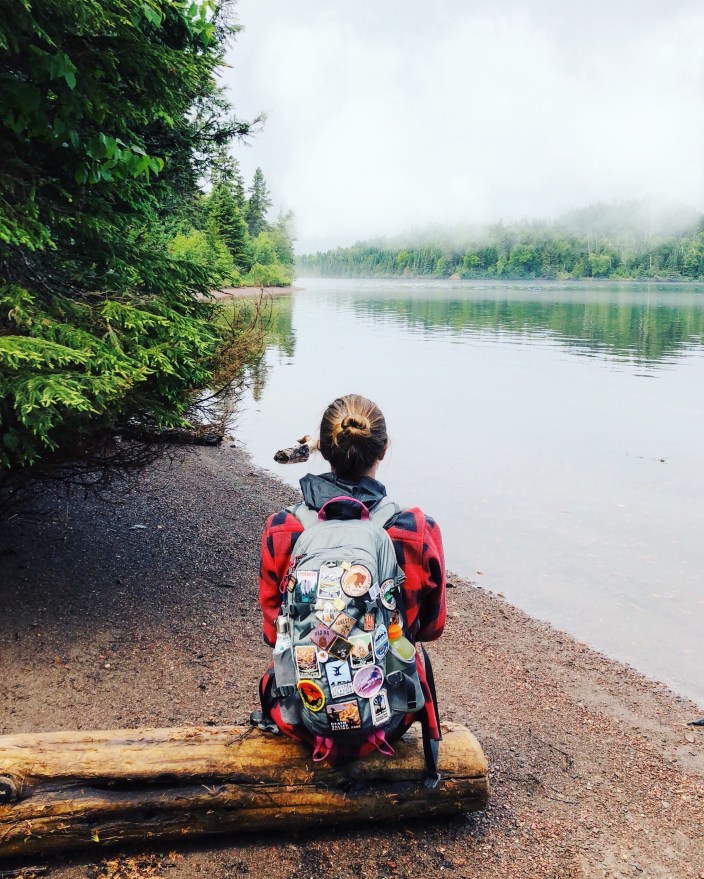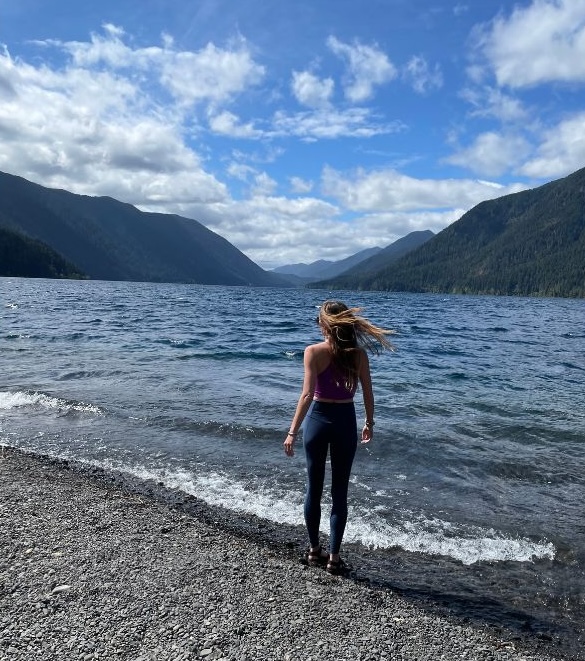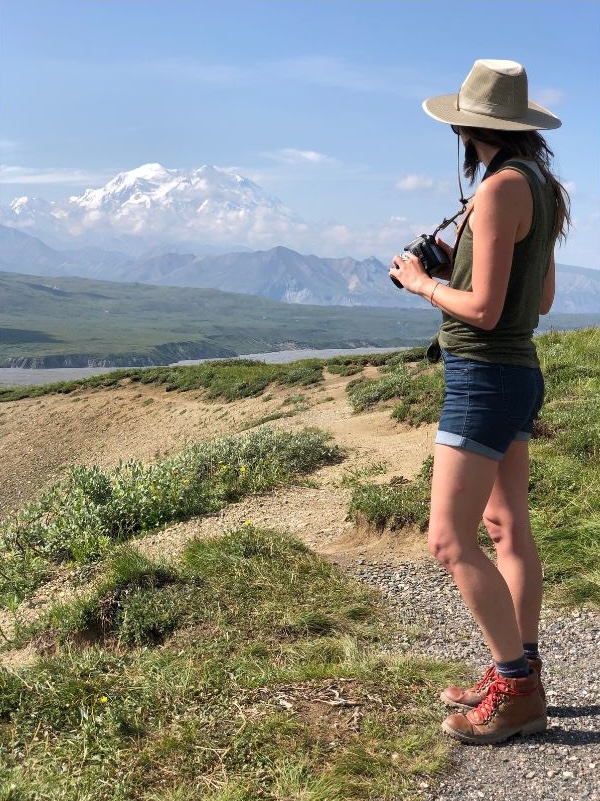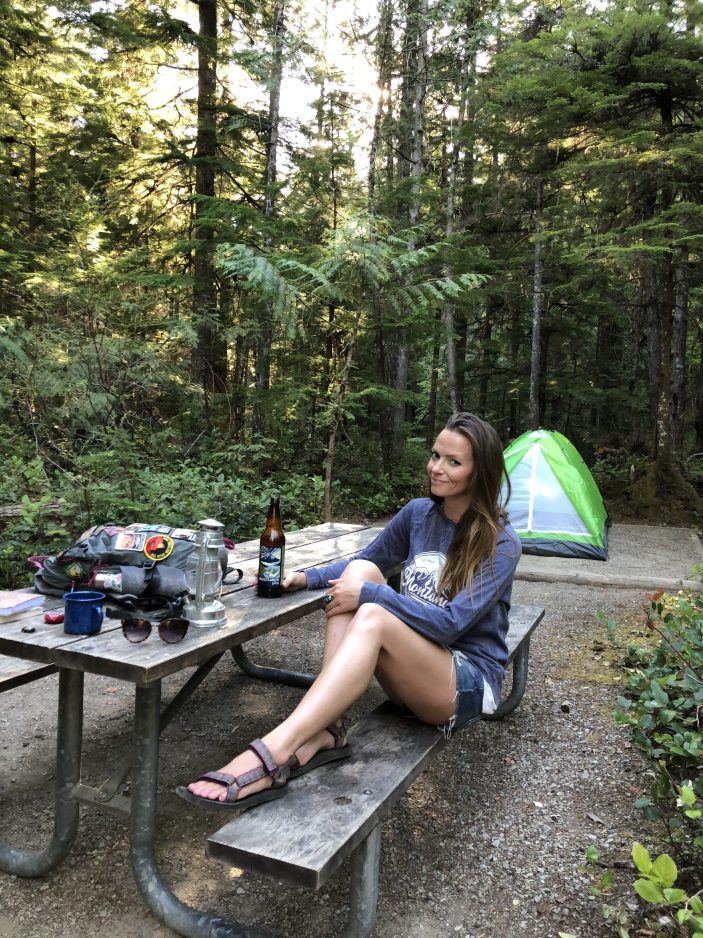
July is in full swing. Summer is really and fully here, and in many parts of the United States, that means heat—extreme heat, even dangerous heat waves. And National Park road trips. While I love a trip to a desert park in Utah or the otherworldly landscapes of Badlands or the Grand Canyon, they’re generally best left for shoulder seasons when the sun is less intense.
So where can you travel to beat the heat while still enjoying some of the world’s most iconic landscapes? I’ve got you covered. After traveling to 59 of the current 63 major US National Parks, there are some parks that I always recommend for summer travel.
Here is where to go, where to stay, and what to do.
ISLE ROYALE NATIONAL PARK – MICHIGAN

Average July Temperatures High / Low(°F): 74° / 55°
For a true wilderness experience, with hiking trails, historic sites, wildlife—and lower temperatures—head to Isle Royale National Park. The remote island archipelago is surrounded by Lake Superior, the world’s largest freshwater lake. The park is accessible only by boat or seaplane, making for a true adventure.
What To Do:
Hike around Rock Harbor or Windigo Bay – be sure to trek to Suzy’s Cave and Grace Creek Overlook. Fish in Lake Superior, scuba dive to some of Isle Royale’s nearby shipwrecks, canoe, or kayak on the inland lakes of Lake Superior, or join a guided ranger or boat tour for the day.
Where To Stay:
You can camp on the island at one of the 36 campsites with a permit or stay at the Rock Harbor Lodge and Windigo Camper Cabins – the only lodging on the island. Otherwise, plenty of lodging is near the ferries in Houghton and Cooper Harbor, Michigan, or Grand Portage, Minnesota.
OLYMPIC NATIONAL PARK – WASHINGTON

Average July Temperatures High / Low(°F): 62° / 44°
One of – if not the most – diverse National Parks is settled within a day’s drive from Seattle. Olympic National Park in Washington state is truly dramatic and iconic, encompassing glacier-capped mountains, lush rainforests, and a wild coastline stretching along the Pacific Ocean.
What To Do:
Visit the Hoh Rainforest – home to what some claim is the “quietest place on earth” –hike at Hurricane Ridge, visit Lake Crescent, and catch the sunset on Ruby Beach.
Where To Stay:
If you’re a Twilight fan, be sure to stay in Forks (the town the movie is based on), otherwise, you can camp at one of the 15 developed campgrounds or stay in one of the historic lodges – Lake Quinault Lodge is a favorite of mine.
DENALI NATIONAL PARK – ALASKA

Average July Temperatures High / Low(°F): 59° / 39°
For a bucket list adventure, head to Denali National Park and Preserve in Alaska—home to North America’s tallest peak, Denali. Boasting a vast, intact ecosystem with mountains, glaciers, and diverse wildlife, visitors come to see Denali’s majesty, hike the tundra, and spot grizzly bears, wolves, and caribou—in generally lower temperatures than in the continental 48 to the South.
What To Do:
The 92-mile park road is restricted to mile 15 for visitors in private vehicles, so nearly everyone who visits will do so on a bus tour, with narrated and non-narrated options, varying from 17 miles to 43 miles of the road with several stops. Transit buses are available for hikers and campers until mile 43 due to a recent landslide.
Where To Stay:
Many people who visit Alaska in the summer do so in an RV or a van, as boondocking is legal in much of the state (unlike others). I recommend renting a van or RV on RVshare for easy access and flexibility for your Alaskan adventure. If you’d like something more solid, several options exist outside the park and nearby Talkeetna.
VOYAGEURS NATIONAL PARK – MINNESOTA

Average July Temperatures High / Low(°F): 76° / 55°
Head to Voyageurs National Park in northern Minnesota for a wild and water-filled adventure. Named after the French-Canadian fur traders who explored the region, the park is an impressive 40% water, with four major lakes, 26 smaller lakes, and over 500 islands.
What To Do:
Get out on the water! A private boat, houseboat, or guided tour is the best way to see Voyageurs. Paddling a kayak or canoe is another excellent way to get around and enjoy the park’s peacefulness.
Where To Stay:
Stay on a houseboat or camp on one of the park’s primitive, front or backcountry campsites (all require a boat to reach). I loved staying at Kettle Falls Hotel, the only public lodging within the park. The historic hotel is fascinating, with a restaurant, bar, hiking trails, and canoes on site. Arrange a boat transfer to the hotel for a true adventure without the hassle of renting your own.
KENAI FJORDS NATIONAL PARK – ALASKA

Average July Temperatures High / Low(°F): 50° / 35°
For a coastal Alaskan glacier-filled adventure, head to Kenai Fjords National Park. The land is sculpted by glaciers, including the Harding Icefield, which feeds massive rivers of ice that carve fjords, valleys, and a rugged coastline teeming with wildlife.
What To Do:
Most visitors experience the park on a boat tour departing from Seward. Tours typically last from a half-day to a full day and cruise through the park’s fjords, past glaciers, and into wildlife hotspots to some of the most magical locations imaginable. Some tours offer half-day kayaking and half-day boat tours, which I recommend. You’ll also want to hike some of the Harding Icefield Trail, a 33-mile trail that leads through rainforests and up to the Harding Icefield, the largest piedmont glacier in the United States, and Exit Glacier, the only part of the park accessible by car.
Where To Stay:
The park is right in Seward, which is, in my opinion, one of the most beautiful parts of Alaska. I camped right on the coastline for just $20 a night in a developed site (with showers!) in a van, but there are many hotel options and short-term rentals here.
ACADIA NATIONAL PARK – MAINE

Average July Temperatures High / Low(°F): 76° / 55°
Acadia National Park, one of the crown jewels of the National Park system, is known for its fall colors, but I’d argue the summer is just as – if not more – beautiful. Tucked along Maine’s rocky coast, the smaller park still manages to encompass mountains, forests, lakes, and islands. Home to Cadillac Mountain, the highest point on the Atlantic coast, it’s the perfect place to escape the heat.
What To Do:
Watch sunrise or sunset atop Cadillac Mountain – with a reservation – before (or after) hiking the Beehive Loop, Jordan Pond, or the Ocean Path. Grab popovers and prosecco at the famed Jordan Pond House before heading to the Schoodic Peninsula area of the park for some solitude.
Where To Stay:
There are lots of options in Bar Harbor, where Acadia is located. I recommend a bed and breakfast to complete the East Coast vibe or the Acadia outpost of the popular Under Canvas glamping spot.
NORTH CASCADES NATIONAL PARK – WASHINGTON

Average July Temperatures High / Low(°F): 53° / 29°
Just a few hours from Seattle lies one of the generally “least visited” National Parks in the system. North Cascades National Park, a vast wilderness in Washington state, is incredibly dramatic, with jagged peaks, blue lakes, and over 300 glaciers – the most of any US area outside Alaska.
What To Do:
North Cascades is definitely a “hiking-forward” park. With over 400 miles of absolutely incredible trails, many heading high into the alpine, you have to get out onto the trail — having a subscription to AllTrails+ here will be key. Take a dip or kayak on the unbelievably turquoise blue Diablo Lake, or just drive on the jaw-droppingly beautiful North Cascades Highway.
Where To Stay:
I prefer to camp in one of North Cascades’ six drive-in campgrounds (there are also boat-in-only campgrounds available!) to truly immerse myself in the park’s beauty. Other options are the bucket list-worthy Ross Lake Resort, with its infamous floating cabins along the lake, or North Cascades Lodge at Stehekin.
